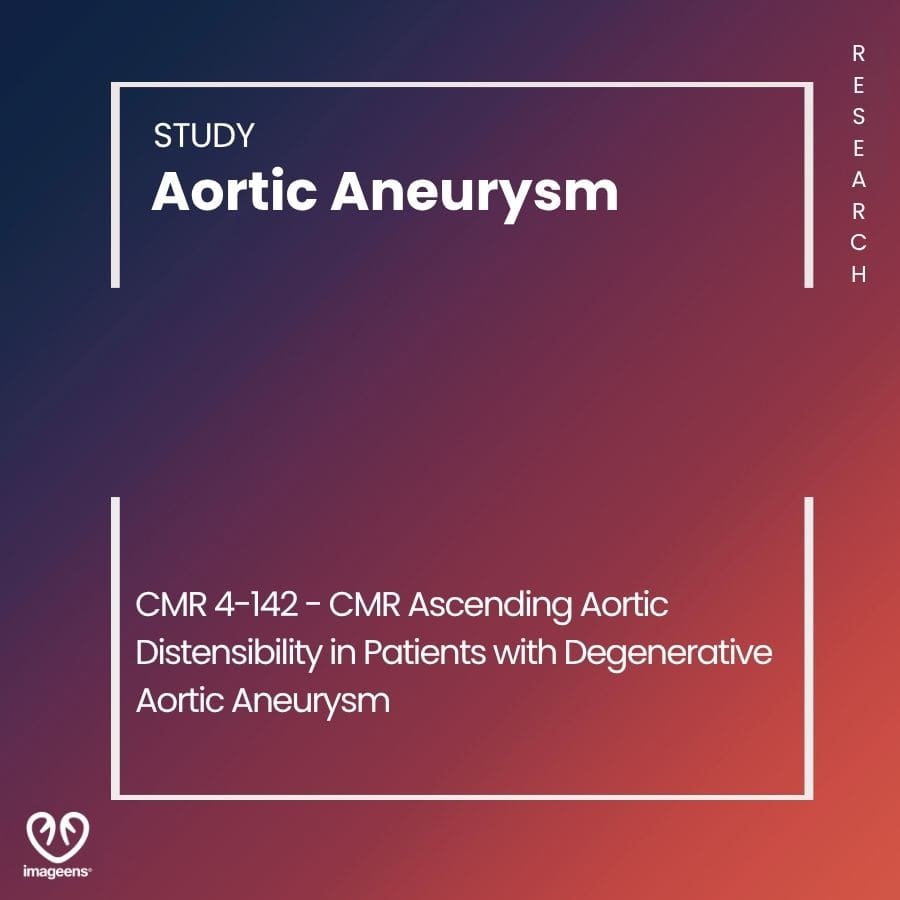Aortic Aneurysm Study
In patients with aortic aneurysms, prophylactic surgery has been indicated based on the aortic diameter for decades. However, many acute aortic events happen below the recommended diameter threshold for surgery. Functional aortic imaging may play a role in aortic risk stratification beyond diameter assessment. CMR uniquely provides accurate diameters of the aorta but also functional parameters such as distensibility, which is the ratio of the aortic area variation during the cardiac cycle (aortic strain) normalized to the central or brachial pulse pressure (respectively AADc and AADb). The prognostic value of aortic distensibility for mortality and cardiovascular events has been shown in the general population but data are lacking in patients with aortic aneurysm.
Our aims were to describe:
- The distribution of AADc in patients with aneurysm compared to matched controls
- The relationship of AADc with AA diameter in patients with aneurysm
A first comprehensive study of AAD in ascending aorta aneuvrysms using ArtFun+ was presented at the SCMR in 2024 based on data from the Heart Institute of Pitié Salpêtrière Hospital and Sorbonne University department of cardiovascular imaging and cardiac surgery. This preliminary study showed that aortic distensibility was severely reduced in patients with aneurysm compared to age-matched controls without aneurysm.
Second, we could define a group of patints in the grey zone concerning the decision for prophylactic surgery based on maximal aortic diameter which showed a fast progression of aortic aneuvrysm size as a surrogate for potential acute aortic syndrome. These patients in particular has AAD<10th percentile of expected AAD for their age group.
This study is currently extended and will be presented with a group of 120 patients. An expert staff meeting dedicated to surgery decision making in patients with aortic aneurysm has been started at Pitié Salpêtrière Hospital and uses ArFun+ measured AAD in routine to re-stratify aortic risk in patients with aneurysm.



